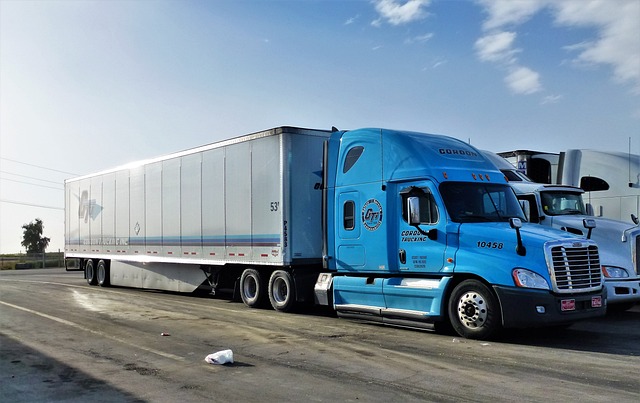The article provides a comprehensive overview of the essential aspects of truck batteries, which are vital for the operational efficiency and performance of heavy-duty vehicles. A standard truck battery is composed of six cells with positive and negative plates in an electrolyte solution, wired in series to produce a 12-volt system that powers various electrical systems, from starting engines to lighting and advanced features like telematics and electronic logging devices. The battery's capacity, measured in ampere-hours (Ah), is crucial for its energy output over time, and regular maintenance is necessary to keep it operating at peak performance. Factors such as electrolyte specific gravity, terminal cleanliness, and temperature regulation play significant roles in maintaining the health of the battery. The article also points out that the increasing complexity of electrical systems in heavy-duty trucks requires larger batteries with greater reserve capacity, especially with the advent of electric and hybrid trucks that have heightened energy demands. Climatic conditions significantly influence battery selection due to their impact on capacity and lifespan; thus, specialized engineering is essential for batteries to perform reliably across various temperatures. The evolution towards lithium-ion truck batteries is transforming the industry with enhanced capabilities, longer ranges, and improved safety through smart battery management systems (BMS). As technology advances, the anticipation grows for next-generation batteries like solid-state batteries, which promise even greater efficiency and performance improvements in the trucking sector. These advancements underscore the critical role of truck batteries in the transportation industry's continuous evolution towards more efficient and sustainable operations.
When it comes to the complex machinery that powers modern trucks, understanding the pivotal role of the battery is key. This article delves into the seven most influential factors affecting truck battery sizes, shedding light on each aspect from the battery’s anatomy and performance to the impact of advanced technologies and climate variations. Truck owners and operators will find insights into capacity requirements, energy efficiency measures, and maintenance strategies that not only enhance their vehicles’ reliability but also contribute to operational efficiency. By examining current trends and predicting future developments in truck batteries, this comprehensive guide aims to equip you with the knowledge necessary for making informed decisions about your fleet’s power needs.
- Understanding the Anatomy of a Truck Battery and Its Role in Performance
- Capacity Requirements: How Heavy-Duty Use Demands Larger Batteries
- The Impact of Climate on Truck Battery Size and Selection
- Advanced Technologies and Their Influence on Truck Battery Sizes
Understanding the Anatomy of a Truck Battery and Its Role in Performance

Understanding the anatomy of a truck battery is fundamental to comprehending its role in the vehicle’s performance. A typical truck battery is composed of six cells, each consisting of a positive and negative plate submerged in a solution of sulfuric acid and distilled water. These cells are series-connected to create the 12-volt unit that powers the truck’s electrical systems. The performance of this battery is critical, as it not only starts the engine but also supports ancillary systems such as lighting, onboard diagnostics, and in-cab comfort features. The battery’s capacity, measured in ampere-hours (Ah), determines how much power it can deliver over time. In terms of maintenance, keeping the electrolyte at the proper specific gravity and ensuring clean terminals are essential for optimal performance. Additionally, operating within the recommended temperature range helps maintain the integrity of the battery’s chemical composition, which in turn affects its longevity and reliability. Regular monitoring of the charging system and voltage levels can help prevent premature aging or failure of the battery, which is a vital component for the truck’s overall functionality. For heavy-duty trucks, the battery’s role becomes even more critical due to the increased demands on the electrical systems, especially with the integration of advanced telematics and electronic logging devices, making it imperative for truck owners and operators to prioritize truck battery health for consistent performance and reliability on the road.
Capacity Requirements: How Heavy-Duty Use Demands Larger Batteries

In the realm of heavy-duty trucks, the demand for robust and reliable power sources is paramount. The batteries in these vehicles are subject to significant stress due to their extensive use in various operational conditions. Truck batteries, particularly those designed for heavy-duty applications, must have a substantial capacity to meet the energy requirements of modern commercial vehicles. These trucks are equipped with a myriad of electrical systems and components, including starters, alternators, lighting, telematics, and onboard diagnostics, all of which draw power continuously. The larger the battery size, the more reserve capacity it possesses, ensuring that these critical systems function optimally even under the most demanding conditions. Furthermore, the advent of electric and hybrid trucks has further intensified the need for high-capacity batteries. These alternative energy vehicles necessitate even larger battery packs to achieve the necessary range and performance levels expected by consumers and operators. The design and selection of a truck battery are influenced by factors such as the vehicle’s weight, the types of routes it will traverse, the frequency of stops, and the total operational hours. As a result, manufacturers prioritize capacity requirements when engineering these batteries to ensure they can handle the rigorous demands of heavy-duty trucks, thereby enabling these vehicles to operate efficiently and effectively over their service life.
The Impact of Climate on Truck Battery Size and Selection

When considering the optimal battery size for trucks, climate plays a pivotal role in dictating the necessary capacity and type of battery to ensure vehicle reliability and longevity. In regions with extreme temperatures, such as arid deserts or subarctic climates, truck batteries must be robust enough to handle the stress of hot days and cold nights. The high temperatures can lead to faster evaporation of the active chemicals in standard batteries, reducing their effectiveness over time. Conversely, cold temperatures can cause the electrolyte solution to thicken, leading to reduced battery efficiency and a decrease in cranking power, which is crucial for starting the engine each day. To mitigate these issues, heavy-duty trucks often employ enhanced batteries designed with a higher number of plates and more robust construction materials that can withstand temperature extremes. Additionally, options like thermal management systems are integral to maintaining battery performance by regulating temperatures within acceptable ranges, thus ensuring consistent energy delivery regardless of climatic conditions. Selecting the right truck battery in terms of size and type, therefore, is a decision that must account for the local climate to prevent frequent replacements or unexpected failures on the road.
Advanced Technologies and Their Influence on Truck Battery Sizes

The advent of advanced technologies has significantly impacted the design and size of truck batteries, leading to notable changes in the electric vehicle (EV) sector of the transportation industry. Lithium-ion technology, which dominates the EV landscape, offers higher energy densities compared to traditional lead-acid batteries, enabling trucks to carry more cargo or travel longer distances on a single charge. These advancements are pivotal, as they directly contribute to the increased range and payload capacity that are essential for long-haul trucking operations. Moreover, the integration of smart battery management systems (BMS) ensures optimal performance and longevity, further refining the requirements for truck battery sizes. These systems monitor and regulate the charge levels and temperatures of batteries, preventing overcharging or operating under extreme conditions that could otherwise reduce battery life and safety. As a result, the evolution of such technologies is a driving force in determining the optimal size of truck batteries, necessitating a careful assessment of the application-specific energy demands to achieve both efficiency and performance in commercial trucking applications. The ongoing development of next-generation batteries, such as solid-state batteries, promises even greater advancements, potentially offering higher capacities and faster charging rates in compact forms, which will further revolutionize the trucking industry by providing more flexibility and reduced downtime for battery swaps or recharging.
In conclusion, the factors affecting the size of a truck battery are multifaceted and critical to the vehicle’s performance and reliability. From the intricate workings of the battery itself to the demanding nature of heavy-duty use, it’s clear that understanding these elements is key for fleet managers and truck owners. Climate conditions also play an important role in determining the optimal battery size, necessitating a tailored approach to ensure peak operation under diverse environmental pressures. The integration of advanced technologies further influences the size of truck batteries, offering enhancements that improve efficiency and functionality. Ultimately, selecting the right battery size is a decision that balances these various factors, ensuring that trucks are equipped with power sources capable of meeting their operational demands. For those in the transportation industry looking to make informed decisions about their fleet’s power needs, focusing on truck batteries is paramount for maintaining productivity and staying ahead in an ever-evolving landscape.



